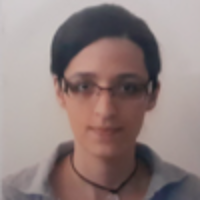Effect evaluation of vitamin D level amongst patients with chronic hepatitis B
Published on: 3rd December, 2019
OCLC Number/Unique Identifier: 8453631452
Vitamin D has immunomodulatory and antifibrotic properties, and therefore used for treatment of many of chronic liver disease [1]. Although there are many reports on the relationship between serum 25-hydroxyvitamin D3 levels and chronic liver diseases, but the relationship between hepatitis B virus e antigen (HBeAg) and vitamin D level is still unclear.
The modification and prevention of vitamin D deficiency needs an accurate illustration of the current position in each region. Vitamin D level in patients with HBV is relatively an important issue, which has been studied in many researches. As different papers published in national and international journals.
Complications of Internal jugular catheters in haemodialysis patients at a kidney care center in Nigeria
Published on: 11th July, 2019
OCLC Number/Unique Identifier: 8199204365
Internal jugular vein catheters (IJC) is recommended as the central venous access of choice in haemodialysis patients. However it is associated with complications of variable severity.
Objectives: To study the complications associated with internal jugular vein catheters in haemodialysis patients in southern part of Nigeria.
Methodology: The clinical details of patients who had IJC insertion at the kidney house, Hilton clinics Port Harcourt from 1st October 2011 to 30th September 2016 were documented. Complications from the IJC developed by the patients during the study period were also documented. The data obtained was analyzed using SPSS version 22. P value less than 0.05 was considered significant.
Results: A total of 129 patients had 150 internal jugular catheter insertions. The mean age was 51.4±15.2 years with male to female ratio of 1.5:1. All the patients had chronic kidney disease; about 80% had tunneled IJC and 96.9% of the catheters were inserted in the right internal jugular vein. Immediate complications were recorded in 10% and late complications in 34.9% of the procedures. The immediate complications were kinking of guide wire (2%), arterial puncture (1.3%) and difficulty in locating the internal jugular vein (1.3%) or tunneling (1.3%). The late complications were infection (12.8%), poor blood flow (9.2%), bleeding (5.5%) and spontaneous removal of the catheter (5.5%). There was no statistical significant difference in both immediate and late complication with age and sex.
The ultrasound examination at discharge had a sensitivity of 31% and specificity of 87% to detect future symptomatic lymphoceles. The positive predictive value was only 10%. The second ultrasound test had the best test variables to detect symptomatic lymphoceles with a sensitivity of 93% and a specificity of 87% and a predictive value of 28%.
Conclusion: Internal jugular catheter is froth with immediate and late complications in haemodialysis patients.
Magnetohydrodynamic CNTs Casson Nanofluid and Radiative heat transfer in a Rotating Channels
Published on: 17th August, 2018
OCLC Number/Unique Identifier: 7821244476
The main purpose of this investigation is to inspect the innovative conception of the magneto hydrodynamic (MHD) nanoparticles of single wall carbon nanotubes base on the fluids (water, engine oil, and ethylene, glycol and kerosene oil) between two rotating parallel plates. Carbon nanotubes (CNTs) parade sole assets due to their rare structure. Such structure has significant optical and electronics features, wonderful strength and elasticity, and high thermal and chemical permanence. The heat exchange phenomena is deliberated subject to thermal radiation. Kerosene oil is taken as based nano fluids because of its unique attention due to their advanced thermal conductivities, exclusive features, and applications. The fluid flow is presumed in steady state. With the help of suitable resemblance variables, the fundamental leading equations have been converted to a set of differential equations. To obtain the solution of the modeled problem, the homotopic approach has been used. The influence of imbedded physical variables upon the velocities and temperature profiles are defined and deliberated through graphs. Moreover, for the several values of relevant variables, the skin fraction coefficient and local Nusselt number are tabulated. Plots have been presented in order to examine how the velocities and temperature profile get affected by various flow parameters.
Forensic Psychology and Criminal Profiling
Published on: 3rd June, 2025
Introduction: Forensic psychology plays a critical role in the criminal justice system, bridging the gap between psychology and law enforcement. One of its most significant applications is in criminal profiling, which involves the analysis of crime scene evidence, behavioral patterns, and psychological indicators to construct a profile of potential offenders. This study explores the intersection of forensic psychology and criminal profiling, focusing on how psychological principles aid in understanding and predicting criminal behavior.Aim: The study aimed to evaluate the effectiveness and limitations of criminal profiling as a tool in criminal investigations, and to examine the methodologies that underpin profiling practices as a vital tool in the field of forensic sciences.Methodology: Qualitative content analysis of documented criminal cases from reputable journals were reviewed for this study. Related articles were searched for from Google Scholar and Research Gate using the Keywords. A selection of high-profile cases where profiling significantly contributed to suspect identification were analyzed to assess the practical utility of psychological profiling.Results: The results indicate that while criminal profiling is not a standalone solution, it offers valuable insights when integrated with traditional investigative techniques. Psychological constructs such as personality disorders, cognitive distortions, and behavioral consistency were found to be instrumental in building accurate profiles. However, the findings also highlight challenges including subjectivity, bias, and the risk of stereotyping, potentially compromising investigative objectivity.Conclusion: Forensic psychology, through the application of criminal profiling, provides a powerful adjunct to investigative procedures. When used responsibly and in conjunction with empirical data and forensic evidence, profiling can enhance the efficiency and direction of criminal investigations. Continued research and standardization of profiling methodologies are essential to maximize its reliability and effectiveness in modern forensic practice. This study contributes to a deeper understanding of the practical roles and limitations of forensic psychology’s role in the pursuit of justice.
Intensive Care Units (ICU): The clinical pharmacist role to improve clinical outcomes and reduce mortality rate- An undeniable function
Published on: 2nd November, 2017
OCLC Number/Unique Identifier: 7317598454
Observing relevant biomedical literature we have see that clinical pharmacist play a crucial role in ICU settings with reducing in mortality rate and improving some clinical outcomes.
Experimental ‘hindbrain related’ syringomyelia: some mechanisms of spinal cord damage
Published on: 6th October, 2017
OCLC Number/Unique Identifier: 7317596430
Syringomyelia in combination with inherent or acquired hindbrain abnormalities is the non seldom and at the same time controversial issue.
Purpose: The etiology and pathogenesis creates a lot of discussion.
Methods: Experimental syringomyelia was induced in 20 anesthetized rabbits by injecting 0.5 ml of 25% kaolin suspension into the cisterna magna. Six rabbits with puncture and injection sterile saline NaCl were used as a control. The animals were sacrificed 1, 2, 4 and 6 months after the kaolin injection. Four hydrocephalus rabbits were sacrificed in 17 hours after the puncture of lateral ventricle with injection of solution of colloidal gold labeled human albuminum. The sections of the brain and spinal cord were stained with hematoxylin and eosin by Nissle and Marchi methods and with immunogold technique. Retropharyngeal lymph nodes of the animals were examined by electron microscopy.
Conclusion: Our observation showed that water hammer effect and internal destruction of the spinal cord may lead to continuous antigen stimulation of regional lymph nodes and play an important role in pathogenesis of experimental syringomyelia.
Prognostic implications of vitamin D deficiency in chronic kidney disease
Published on: 7th August, 2019
OCLC Number/Unique Identifier: 8210607964
Chronic kidney disease (CKD) is a highly prevalent disease, imposing high mortality rates worldwide, and it is closely related to cardiovascular events. Vitamin D deficiency is very prevalent in patients with CKD from the earliest stages of the disease, and it has been associated with higher mortality. In order to assess the prognostic implications of vitamin D deficiency in CKD, we undertook a literature review, searching different databases in October 2018 for publications related to vitamin D in patients with CKD and hypovitaminosis D, and not on dialysis. The main cause of death in these patients is cardiovascular disease. Vitamin D is one of the first parameters that CKD changes and has an important prognostic role in this entity. Deficient levels in blood are associated with increased cardiovascular risk and survival impacts, independently of cardiovascular disease. Treatment with paricalcitol appears to reduce this risk. However, the evidence analyzed is insufficient to establish an association between vitamin D levels and the progression of kidney disease.
Knowledge and views about coordinated individual planning from the perspective of active older adults
Published on: 5th June, 2019
OCLC Number/Unique Identifier: 8165631605
Background: Today’s older adults are often well informed and want to participate in decision-making processes. The coordinated individual planning process offers them active involvement in deciding and owning how their care will be managed.
Aim: The aim of the study was to explore active older adults’ knowledge and views regarding coordinated individual planning.
Methods: The study has an exploratory inductive approach. Five focus-group discussions were conducted with 40 participants from different organizations and associations. A qualitative interpretive description framework was used, and the analysis resulted in four unique themes.
Results: The four themes resulting from the analysis are collaboration and continuity, participation and involvement in decision, individual need for support, and access to information and service. Collaboration between different levels of the healthcare system and between professionals is crucial. Older adults wanted to be participating actors in their healthcare. They worried about the lack of continuity and thought that services were not responsive or did not meet individuals’ needs.
Conclusion: Older adults want their views and preferences to be taken into consideration, and they want to be actively engaged in the decision-making process regarding their care.
Possible bases of the resistance of Coconut palm to the phytoplasma that causes lethal yellowing disease
Published on: 17th February, 2023
Phytoplasmas belong to the parasitic group of mollicutes, which represent a phylogenetically coherent group of pathogens that colonize a wide spectrum of hosts and insects [1].
Molecular analysis of immunoglobulins related to Salmonella typhi in pediatric patients
Published on: 24th April, 2020
OCLC Number/Unique Identifier: 8591037429
Typhoid fever is a systemic infection caused by Salmonella enterica serotype typhi. It is of major concern in tropical regions of the world. Highest episodes of typhoid fever occur in Asia i.e.93%. Early diagnosis of the disease is mandatory to lower the mortality rate associated with it as well as to prevent the emergence of antimicrobial drug resistance by Salmonella typhi. Research work was conducted in Immunology Department of the Children’s Hospital, Lahore for the period of one year including a total of 60 patients suspected of having typhoid fever. Serum samples of these patients were tested for typhidot IgG and IgM antibodies as well as for the antibodies against TO and TH antigens using Widal test. Of the total 60 patients, 10 (16.7%) were positive for both typhidot IgG and IgM, 16 (26.7%) were positive for typhidot IgM, 3 (5%) were Positive for typhidot IgG and 31 (51.66%) were negative for both typhidot IgG and IgM. Reading the results of Widal test, 8 (13.33%) were positive for Widal TO and TH antigens, 3 (5%) were positive for Widal TO antigen, 19 (31.7%) were positive for Widal TH antigen and 30 (50%) were negative for Widal TO and TH antigens. IgM is positive at the early stage of acute typhoid fever, IgM along with IgG positive means the middle stage of acute illness. The detection of only IgG cannot discriminate between acute and convalescent phases as it can stay in the serum for at least 2 years or more. The typhidot test is much helpful for the rapid diagnosis of typhoid fever as compared to Widal test which is still being used in some set ups in poor countries, although has become mostly obsolete. By testing the rise of IgM and IgG antibodies against Salmonella typhi, we can detect the infection at early and late stages, respectively




